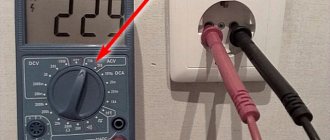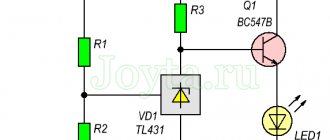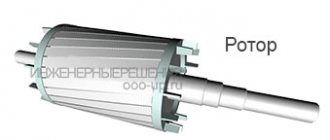The battery (rechargeable battery or battery) is one of the key components of a car. The main role of a car battery is to supply current to the starter when the engine starts. In addition, when the engine is not running, the battery ensures the functioning of various devices (lighting, sound system, signal and other current consumers). When parked, the battery powers the security system. And during a trip, when the generator cannot cope with the load, the battery comes to its aid. Normal functioning of the vehicle's on-board network is only possible with a battery that has a normal charge. Therefore, today we will discuss what the charge rate for a battery is.
Car battery voltage
We are talking about the most important parameter of the battery. The start of the power unit, the operation of the fuel pump at start-up, the functioning of the side lights, running lights and many other components of the passenger car depend on it. Therefore, it is important to regularly monitor the normal voltage of the car battery.
Charged battery voltage
Charging (or rather recharging) is carried out by a generator. But there is a point here: you can ensure 100% battery performance in this way only after driving at least 100 km. Therefore, it is recommended to at least occasionally check the car battery voltage, density and, if necessary, recharge from a network device.
How many volts should a charged battery have?
The design of the product includes six electrically connected cans. What voltage should a charged car battery have? The complete serviceability of the battery and its readiness for operation is indicated by the value U = 12.6–12.9 V. It is not recommended to connect a product with such data to a charger, since the electrolyte may boil away, which will lead to disruption of the functioning of the battery. When purchasing a battery at a car store, do not forget that the voltage of a fully charged car battery corresponds to 12.6 V. You should not refuse to purchase in a situation where U = 12.5 V: this is the normal state for a product that has not been used for a long time (was warehouse). All measurements are carried out at an air temperature of +18 degrees.
Voltage of a charged car battery without load
How many volts should a charged car battery have? The average value is 12.6 V. But some models, as well as batteries, after charging are complete, can produce up to 13.2 V. If the battery design allows, determine the voltage of the car battery on each bank. There is a nuance: the density of the electrolyte in the sections should be the same, the error should be no more than 0.02 g/cubic meter. see Voltage - approximately 1.9 V. If it does not reach 1.7 V, the product section is faulty.
Voltage at low temperatures
When the air temperature drops with the change of seasons, the engine starts more difficult. Many drivers solve this problem in this way: they remove the battery at night and take it home.
Low temperatures have an effect on the density of the electrolyte, which reduces its value.
There is more water in the electrolyte, and the liquid is capable of freezing. Therefore, low temperatures slow down the processes in the battery.
With adequate operation, a battery with liquid electrolyte can operate without replacement for 5-7 years. And if in summer the electrolyte density and state of charge need to be tested once every 3-4 months, then in winter such checks are carried out once every 2-3 weeks.
When living in regions with harsh winter climates, the battery needs to be charged every 5-7 days, even if you constantly use the car.
How many amperes are there in a charged battery?
To understand this issue, you need to familiarize yourself with the battery data, which can be found on the label. This refers to the normal charge of the car battery and the capacity of the product. If it is 60 A/h, it means that the battery (if fully charged) is capable of delivering a current of 5 A for 11 hours. To understand how many amperes there are in a car battery, it needs to be connected to a charger. If this is not done and the terminals of the product are free, the current value will be zero amperes.
It is worth noting that the current readings for different battery models will vary greatly. How many amps does a car battery produce? This is load related. The higher it is (up to a certain limit), the more energy the battery releases. For example, when starting the engine, the recoil force of the battery will be 125 A if the average starter power is 2000 W. There is also a dependence on the ambient temperature. In cold weather, the performance of the battery begins to decrease due to a decrease in the rate of chemical reactions, the voltage at the battery terminals decreases, and the load increases and the value of I increases to 500, and sometimes even 800 amperes. The output level depends on the internal resistance: the lower it is, the better. To achieve the normal voltage of a car battery, designers use special materials to make the plates and take measures to ensure better contact between them and the solution.
Charging a battery with constant resistance
If you set the resistance to a constant, the voltage or current will take variable values. But the resistance inside a car battery is always a variable value, which is influenced by a number of factors: electrolyte saturation, state of charge, temperature. The total value is the sum of two: polarization resistance (not a constant value) and ohmic (constant for a battery).
Since resistance is an unstable quantity depending on the state of the battery, voltage, current, or a combination of both can be taken as a constant. The ballast resistance smoothes the charging flow.
What voltage on a car battery is generally considered normal?
This also refers to the voltage of a charged car battery without load. This is 12.5–13.2 V. The final voltage is obtained at the end of recharging. What voltage should a charged car battery show after 12 hours with the engine off? This is 12.6–12.8 V. To get accurate data, measurements are taken about 12 hours after the engine stops running. This could be, for example, in the morning when the car spent the night parked or in a garage. Before measuring, remove one terminal (“ground”) from the battery. A new and charged battery with a capacity of, for example, 50 A/h can hold its charge unchanged for 141 days (at positive air temperatures) if it is disconnected from the vehicle’s on-board power supply. When connected to it, the charge retention time is reduced by 2 times. Why? Even when the power unit is turned off and the ignition is turned off, current consumption continues: for example, due to the connected alarm system, the leakage ranges from 0.02 to 0.05 A/h.
Minimum voltage
To avoid deep battery discharge, which is fraught with irreversible chemical processes (sulfation), and battery failure, it is necessary to constantly monitor the voltage. The minimum voltage of the car battery is 10.5 V (use the charger to restore the functionality of the product). U = 9 V is a different matter. With this value, the product can only be charged normally with a high-quality charger. But even a reconditioned battery is unlikely to work fully. There are, of course, special schemes for desulfating the battery, but, it is worth repeating, this will not give a 100% effect. This situation may indicate a possible short circuit between the plates.
Under load
Measuring the voltage at the battery terminals under load involves using a special device - a load fork. But do not forget: the device only determines the overall performance of the battery and the degree of its charge or, conversely, discharge. This device will not determine the battery capacity and the beginning of sulfation (if it occurs, of course). Based on this, it is obvious that the device readings do not allow us to draw a conclusion about the service life of the battery. The device consists of:
- from a case with a multimeter;
- a spiral that performs the function of resistance;
- wires ending in alligator clips;
- switch
There are two types of devices: analog (with an arrow) and digital. The latter are more popular as they give more accurate readings. Almost all plugs are designed to operate at positive temperatures from +1 to +35 degrees. But there are also expensive models that can function properly even in thirty-degree frost. The current generated by the device ranges from 100–200 A. In some models, this value can be adjusted. The battery test time under load is no more than 10 seconds. Interestingly, according to EU standards it reaches 20 seconds. The normal voltage of a car battery without load is 12.6–12.7 V.
Engine running
When the engine is running, the voltage on the car battery will be slightly higher due to the generator - 13.6–14.2 V. Disclaimer: within ten minutes after starting it is higher. Checking the voltage on the car battery with the engine running should be done after the engine has been running for at least 15 minutes. Next, turn on all energy consumers in the car:
- windscreen wipers;
- rear window defroster;
- heater (at maximum mode);
- high beam;
- radio
The voltmeter readings should change slightly - by 0.2–0.3 V. If the car battery voltage drops by a greater value while the engine is running, problems with the generator may occur. It makes sense to make a small digression here. In some cars (for example, VAZ2108–2115) a standard native generator is installed on the conveyor belt, producing 80 A. If you use consumers, and many still use such things as a subwoofer, an amplifier for the radio (especially if the volume is turned up to full power), then the generator It simply cannot cope with the load, and the voltage on the battery becomes less than normal. There is only one way to solve the problem: purchase a 100 A generator (it fits the mounts).
How long to charge a lead acid battery
The battery is perceived to be fully charged when the electrolyte begins to boil. The average charging time is usually 9 hours for standard batteries. But this indicator varies depending on the type of battery and its charge level at the time the charging process begins.
It is not recommended to recharge the battery, as this will cause scale to form on the lead plate. After which the battery may deteriorate beyond repair. In order to avoid this, you need to test the height of the electrolyte and its density before starting the process, especially in the cool season.
At high air temperatures, the battery is charged at a capacity reading of 50%; at colder temperatures, this figure is usually 25%.
The battery should be cleaned of dirt, dust and scale not only before charging, but also after, since traces of acid may remain on the surface during the charging process.
You can clean the battery with soap or soda solution. This procedure should be carried out with gloves for safety reasons. At the same time, try not to let the solution leak into the battery jars.
The whole process is quite simple, and if you follow all the instructions, the battery will last a long time and work well.
Discharged battery voltage
A battery whose terminal voltage is less than 11.6 volts is considered completely inoperative (discharged). In such a situation, the operation of an automobile energy source is impossible: the electrical equipment of the car will cease to function. That is, the battery needs to be charged.
A full discharge seriously affects the condition of lead batteries, which are especially sensitive to this problem. For such a battery to lose more than half of its capacity, just one deep discharge is enough. Batteries that contain antimony are more resistant to strong discharge. The same can be said about gel and AGM products. It is recommended to prevent the battery from being completely discharged, which will negatively affect its service life.
The winter period is worth mentioning separately. At this time, due to the slowdown of chemical reactions, the activity of the electrolyte decreases, which is fraught with its freezing. To prevent such an incident, it is recommended to maintain the voltage of a charged car battery and not allow it to drop below 12.5 V.
Electrolyte
The main component that determines the voltage level is the electrolyte.
When using a battery, acid is used - the percentage of electrolyte is 36-37%. The density, as mentioned above, should be 1.27 g/cm3 at a charge rate of 100%.
Table of electrolyte density in the battery by climate zones
How to find out the charge level of a car battery by its voltage
The simplest method is visual. Today, the degree of charge of the battery can be determined by looking at the hydrometric indicator (as it is called, the “eye”). Thanks to it, the degree of charge of the product is determined without improvised means:
The green color of the indicator indicates that the battery is charged more than 60%; dark color indicates the need to charge the battery; a light color indicates the battery's need for distilled water. You can also roughly determine the performance of the battery using a multimeter by measuring the voltage with the engine off, after leaving it for about 12 hours, as mentioned above. Measurements are carried out at a temperature of +18 C.
Here is a table of car battery charge by voltage:
| Performance level (%) | Voltage (V) |
| 100 | From 12.6 |
| 90 | 12,5 |
| 80 | 12,4 |
| 70 | 12,3 |
| 60 | 12,2 |
| 50 | 12,05 |
| 40 | 11,9 |
| 30 | 11,7 |
| 20 | 11,55 |
| 10 | 11,3 |
| 0 | 10,5 |
A mid-priced battery lasts approximately 3 years. If you follow the operating instructions all this time, the battery will not cause you any trouble. One of the main points here is to avoid deep discharge. After the three-year period, control over the battery should be strengthened: at least once every couple of weeks, measure the voltage of a fully charged battery, and, if possible, the density. After 4–5 years, it is recommended to replace the battery with a new one.
Battery charge level table
| Electrolyte density, g/cm³ | Voltage without load | Voltage under load 100 amperes | Battery charge level, % | Electrolyte freezing point, °C |
| 1,11 | 11,7 | 8,4 | 0 | -7 |
| 1,12 | 11,76 | 8,54 | 6 | -8 |
| 1,13 | 11,82 | 8,68 | 12,56 | -9 |
| 1,14 | 11,88 | 8,84 | 19 | -11 |
| 1,15 | 11,94 | 9 | 25 | -13 |
| 1,16 | 12 | 9,14 | 31 | -14 |
| 1,17 | 12,06 | 9,3 | 37,5 | -16 |
| 1,18 | 12,12 | 9,46 | 44 | -18 |
| 1,19 | 12,18 | 9,6 | 50 | -24 |
| 1,2 | 12,24 | 9,74 | 56 | -27 |
| 1,21 | 12,3 | 9,9 | 62,5 | -32 |
| 1,22 | 12,36 | 10,06 | 69 | -37 |
| 1,23 | 12,42 | 10,2 | 75 | -42 |
| 1,24 | 12,48 | 10,34 | 81 | -46 |
| 1,25 | 12,54 | 10,5 | 87,5 | -50 |
| 1,26 | 12,6 | 10,66 | 94 | -55 |
| 1,27 | 12,66 | 10,8 | 100 | -60 |
Test modes
You need to check the voltage after charging in all operating modes of the car. Let's consider each of the possible options in more detail.
With the engine running
The test method with the engine running is to determine the ability of the battery to “hold” the battery charge when gradually connecting various loads. When energy consumers are turned off, the voltage of fully charged car batteries should not be less than 13.6 Volts. And after turning on the low beam, for example, this value should drop by 0.1-0.2 Volts, no more.
If you gradually connect all the equipment in the cabin, then the readings of the measuring device should decrease (as each new load is turned on). This indicates the normal condition of the battery. If the readings change sharply, the problem is most likely in the generator system, which does not provide the necessary recharging. For all loads connected to the battery, its minimum voltage should not be lower than 13.0 Volts. Otherwise, the battery will be completely discharged after some time.
Engine off
The normal voltage when the engine is off is 12.5-13.0 Volts. This value must be maintained for a day or more. If it drops over time, you will need to figure out the reasons for the leak. This could be due to high humidity or cracks in the jars. In general, there are a lot of reasons for leaks, so each specific case needs to be examined separately.
Important! Before measurements, you need to let the battery cool for about a day.
After such a time period, all chemical processes in the electrolyte caused by charging from an electric generator usually end.
At low temperatures
The peculiarity of checking battery parameters at low temperatures is that in this case the nature of chemical reactions in the electrolyte changes. Its cooling leads to a decrease in density and a voltage drop, which under these conditions is unstable and may not meet established standards.
Please note: Particular attention is paid to this phenomenon in winter. In this case, you can start checking the battery only after the density in the banks has been restored to the required value.
In regions with particularly harsh winters (down to minus 50 °C), the density will need to be increased to values from 1.27 to 1.29 g/cm3, which eliminates the possibility of the battery “freezing”. At the same time, you should always remember that in order to increase the battery life, under normal conditions they strive to reduce this indicator.
Reasons for discharge
The answer to the question why the battery discharged depends on the nuances of using the vehicle. The key reasons are:
- the battery life has come to an end;
- the generator in the car is faulty and leaks current;
- on-board electrical appliances are used too intensively, the power grid operates with excessive load;
- the driver left the car, forgetting to turn off the radio or side lights before leaving.
The above points should be kept under control. When buying a new battery, you need to check how charged it is. The accuracy of the result is important here, so several measurements are performed, with and without load. This requirement also applies to the situation of buying a used car. It is strongly not recommended to operate the vehicle without checking the charge level.
How are voltage measurements made?
Understanding voltage measurements in a car battery is not that difficult. To do this, you will need to arm yourself with a voltmeter or a multimeter set to voltage measurement mode (U).
In order for the parameters to be as accurate as possible, several conditions must be met:
- the temperature is between 15-25 degrees Celsius;
- The battery is disconnected from all consumers;
- terminals and contacts are cleaned and free of traces of oxides;
- the seal of the housing is not broken;
- there are no traces of condensation or water on the body;
- the multimeter is set to 20 V;
- the measuring device is working properly.
If you take measurements at low temperatures, the voltage will decrease.
Now all that remains is a small matter. Observing polarity, the probes of the measuring device are connected to the battery terminals. Plus goes to plus and minus connects to minus. The screen displays the current voltage.











